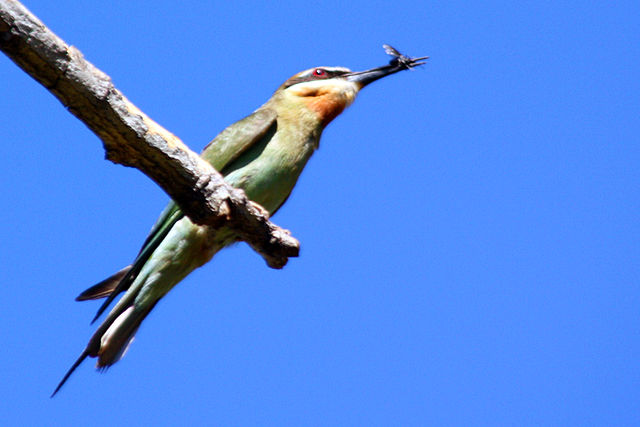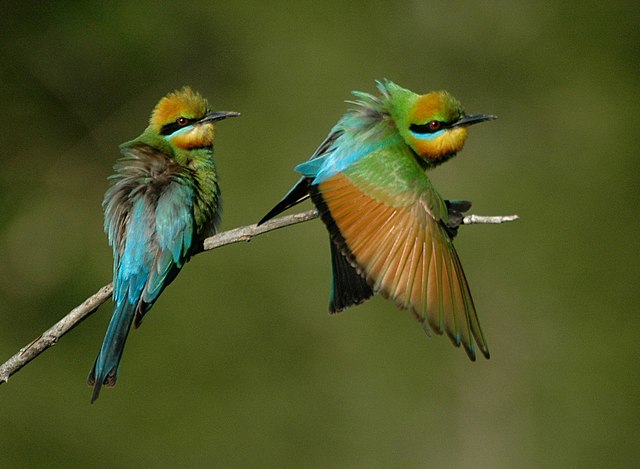The olive bee-eater or Madagascar bee-eater is a near passerine bee-eater species in the genus Merops. It is native to the southern half of Africa where it is present in Angola; Botswana; Burundi; Comoros; Democratic Republic of the Congo; Djibouti; Eritrea; Ethiopia; Kenya; Madagascar; Malawi; Mayotte; Mozambique; Namibia; Rwanda; Somalia; South Sudan; Sudan; Tanzania; Uganda; Zambia; Zimbabwe. It is a common species with a wide range so the International Union for Conservation of Nature has rated their conservation status as "least concern".
Olive bee-eater
A bee caught in the Anjajavy Forest
Pair in the Anjajavy Forest
In flight over a swimming pool at Anjajavy
The bee-eaters are a group of birds in the family Meropidae, containing three genera and thirty species. Most species are found in Africa and Asia, with a few in southern Europe, Australia, and New Guinea. They are characterised by richly coloured plumage, slender bodies, and usually elongated central tail feathers. All have long down-turned bills and medium to long wings, which may be pointed or round. Male and female plumages are usually similar.
Bee-eater
Rainbow bee-eaters, a Merops species
Merops species such as the white-fronted bee-eater usually have a black bar through the eye.
The blue-bearded bee-eater is associated with forests, where it forages in edge habitats








